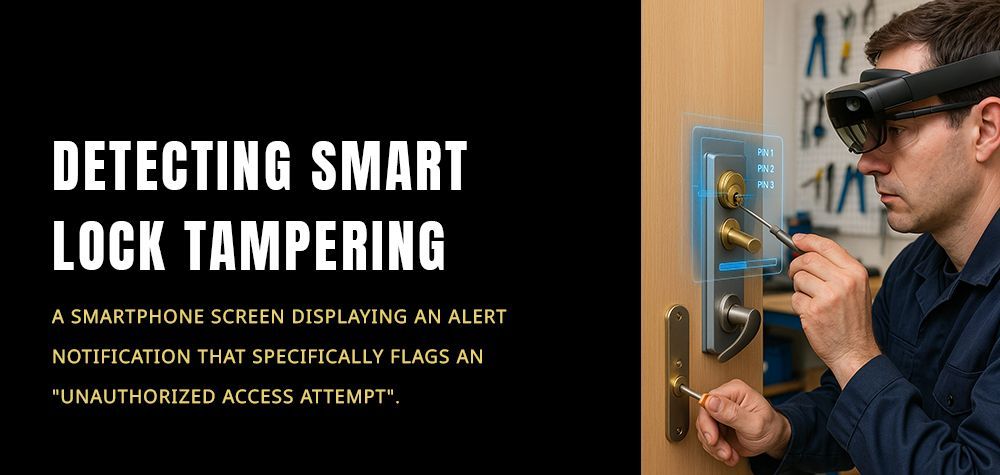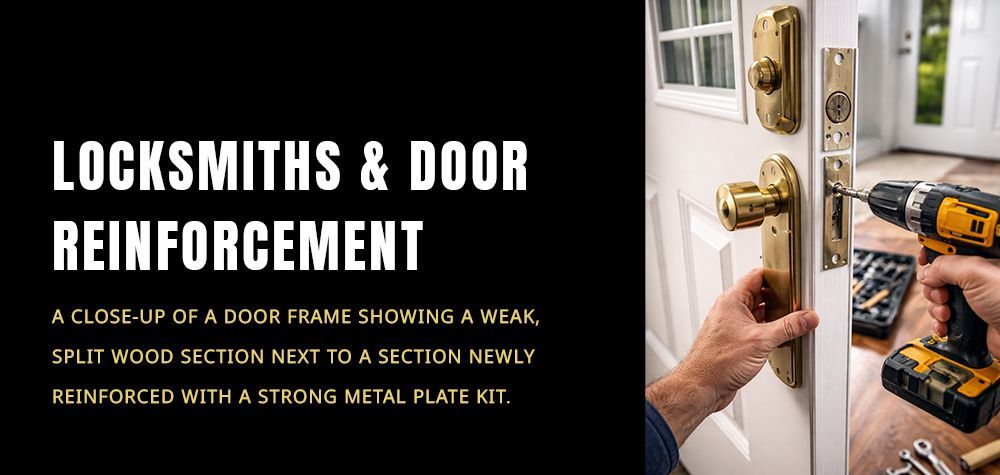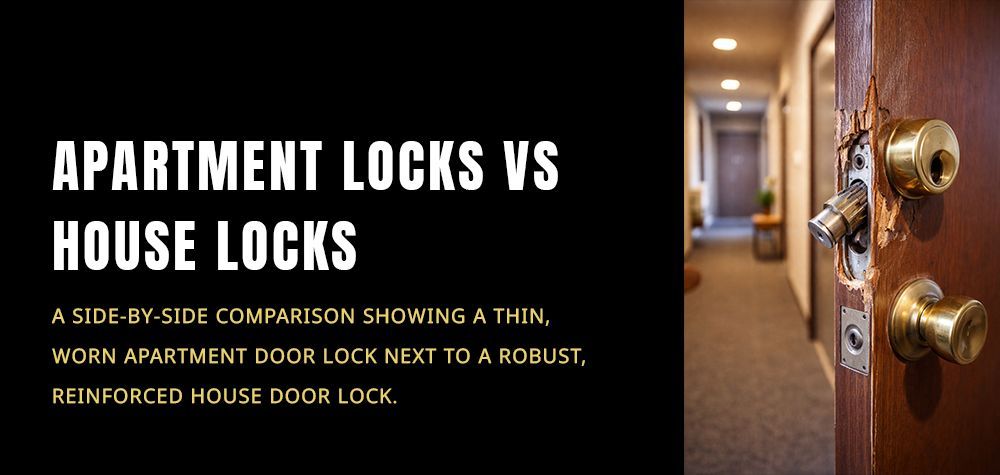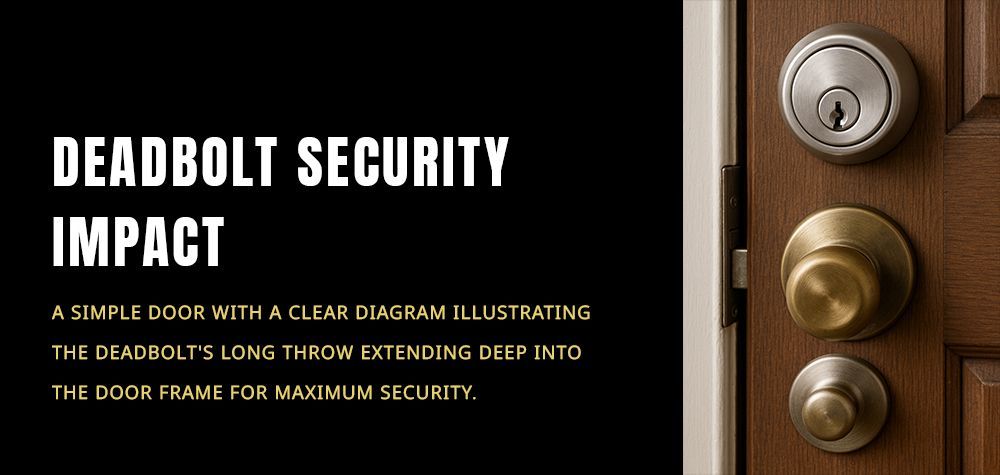Tips to enhance backyard security
Welcome to our comprehensive guide on what to do when your key won't turn in the lock. As experts in the field of locksmithing, we understand the frustration and inconvenience that comes with encountering this common issue. Whether you're trying to unlock your front door, your car, or any other lock, a key that refuses to turn can quickly derail your plans and leave you feeling stranded.
In this blog post, we'll delve into the various reasons why keys may fail to turn in locks and provide you with practical solutions to resolve the problem. From simple troubleshooting steps to more advanced techniques, we'll equip you with the knowledge and tools you need to overcome this challenge effectively.
Our goal is not only to help you regain access to your property but also to empower you with valuable insights into lock mechanisms and maintenance practices. By understanding the root causes of key-related issues and learning how to address them proactively, you'll be better prepared to handle similar situations in the future.
So, whether you're facing a stubborn deadbolt, a sticky car ignition, or any other lock-related dilemma, rest assured that we've got you covered. Let's dive in and unravel the mysteries of lock mechanics together, ensuring that you never feel locked out of your own life again.
Install Cameras:
Installing security cameras around your property is a highly effective deterrent against intruders and provides valuable surveillance footage in case of a break-in. Modern security camera systems offer a range of features such as motion detection, night vision, and remote monitoring capabilities, allowing you to keep an eye on your home from anywhere. By strategically placing cameras at key entry points and vulnerable areas, you can significantly enhance the security of your property. Additionally, the presence of visible cameras serves as a strong visual cue to potential burglars that your home is under surveillance, often deterring them from attempting to break in. Investing in high-quality cameras with advanced features ensures that you capture clear footage and vital details in various lighting conditions. With the option to store footage locally or in the cloud, you can access recordings and review events remotely, providing peace of mind even when you're away from home. By integrating security cameras into your overall home security strategy, you create a robust defense system that helps protect your property, belongings, and loved ones.
Lock the Windows:
Windows are often overlooked when it comes to home security, but they can serve as vulnerable entry points for intruders if left unlocked or unsecured. Installing secure window locks or reinforcements adds an extra layer of protection to your home and helps prevent unauthorized access. There are various types of window locks available, including key-operated locks, sliding window locks, and sash locks, allowing you to choose the option that best suits your needs and window type. Additionally, consider reinforcing windows with shatterproof glass or security film to make them more resistant to breakage. This makes it harder for intruders to gain entry through windows and reduces the risk of forced entry. Remember to lock all windows before leaving your home or going to bed, even on upper floors, as determined intruders may attempt to access them via ladders or climbing. By prioritizing window security and implementing proper locking mechanisms, you enhance the overall security of your home and create a safer environment for you and your family.
Install a Security System:
Investing in a comprehensive home security system provides a robust defense against potential threats and offers peace of mind knowing that your property is well-protected. Modern security systems come equipped with a range of features such as sensors, alarms, and monitoring services, designed to detect and deter intruders effectively. When choosing a security system, consider factors such as your home's layout, your specific security needs, and the level of monitoring you require.
Wireless security systems offer flexibility and ease of installation, allowing you to easily expand and customize your system as needed. Many systems also offer smartphone integration, enabling you to control and monitor your security system remotely. With features like motion sensors, door/window sensors, and surveillance cameras, you can detect any unauthorized entry or suspicious activity and receive instant alerts on your smartphone or via email.
Keep Your Keys Away from Intruders:
It may seem obvious, but keeping track of your keys and ensuring they are not accessible to potential intruders is essential for home security. Avoid leaving spare keys in obvious hiding spots such as under doormats, flower pots, or fake rocks, as these are the first places burglars will check. Instead, consider investing in a secure key lockbox or giving spare keys to trusted neighbors or family members.
If you suspect that your keys may have been lost or stolen, it's crucial to act quickly to prevent unauthorized access to your home. In such cases, consider rekeying or replacing the locks on your doors to maintain security. Additionally, consider upgrading to keyless entry systems or smart locks, which eliminate the need for traditional keys altogether and offer enhanced security features such as remote access and activity logs. By taking proactive measures to safeguard your keys, you reduce the risk of unauthorized entry and enhance the overall security of your home.
Secure the Doors:
Doors are a primary point of entry for intruders, making them a critical focus for home security efforts. Ensuring that your doors are properly secured with high-quality locks and reinforcements is essential for preventing unauthorized access. Deadbolt locks are recommended for exterior doors as they provide superior strength and resistance to forced entry. Consider installing additional security measures such as door jammers, strike plates, and doorbell cameras to further enhance the security of your doors. Reinforcing door frames with metal or steel plates adds extra strength and prevents doors from being kicked in. Regularly inspecting and maintaining door locks, hinges, and frames helps ensure they remain in good working condition and provides peace of mind knowing that your home is well-protected against potential threats.
Up Your Home Security:
Elevating your home security measures involves a combination of proactive steps aimed at fortifying your property against potential threats. Conduct a comprehensive security assessment of your home to identify vulnerabilities and areas for improvement. Start by reinforcing weak points such as doors, windows, and entryways with high-quality locks, security bars, and shatter-resistant glass. Consider installing outdoor lighting fixtures equipped with motion sensors to illuminate dark areas around your property and deter intruders. Surveillance cameras strategically positioned at entry points and vulnerable areas provide valuable visual evidence in the event of a security breach. Pairing these cameras with signage indicating video surveillance can act as a deterrent to would-be intruders.
Use Home Automation:
Embracing home automation technology offers convenience, efficiency, and enhanced security for modern homeowners. Integrated smart home systems allow you to control various aspects of your home's security, lighting, climate, and entertainment systems remotely from your smartphone or other connected devices. Smart door locks enable keyless entry and provide customizable access codes for family members, guests, and service providers. Pairing these locks with geofencing technology allows for automatic locking and unlocking based on your proximity to the home, enhancing convenience while maintaining security.
Use Your Blinds:
While often overlooked, utilizing blinds or curtains effectively contributes to your home security by preventing potential intruders from peering into your windows and assessing the contents of your home. Keep blinds closed, especially in areas with valuable belongings, to minimize the visibility of your possessions from outside. Consider investing in window treatments with adjustable slats or blackout capabilities, allowing you to control the amount of natural light and visibility into your home while maintaining privacy and security. Additionally, installing window film or security screens adds an extra layer of protection against forced entry attempts, as these materials reinforce the glass and make it more difficult to break through.
Close the Garage Door:
Neglecting to close your garage door properly can pose a significant security risk, as it provides easy access to your home for potential intruders. Make it a habit to always close the garage door securely whenever it's not in use, whether you're at home or away. Invest in a reliable automatic garage door opener with remote access capabilities, allowing you to monitor and control the door remotely from your smartphone or other devices. Consider installing additional security features for your garage, such as a deadbolt lock on the door leading from the garage into your home and motion-activated lights or surveillance cameras to deter unauthorized access attempts. Reinforce garage windows with shatter-resistant glass or cover them with blinds or curtains to prevent prying eyes from seeing inside.
Regularly inspect the garage door and its components for signs of wear or damage, such as broken springs, worn-out rollers, or malfunctioning sensors, and promptly address any issues to ensure the door operates smoothly and securely.
Eliminate Hiding Places:
Assess your property for potential hiding spots where intruders could conceal themselves while attempting to gain access to your home. Trim back overgrown vegetation, bushes, and trees near windows, doors, and entryways to eliminate hiding places and increase visibility from both inside and outside your home. Remove or relocate items such as large outdoor furniture, storage sheds, or structures that could provide cover for intruders. Keep landscaping features, such as shrubs and hedges, neatly trimmed and maintained to minimize potential hiding spots and maintain clear lines of sight around your property.
Get a Dog:
Dogs can serve as effective deterrents to potential intruders due to their keen senses, territorial instincts, and protective nature. Consider adopting a dog from a reputable shelter or breeder and select a breed known for its loyalty, intelligence, and suitability as a guard dog, such as a German Shepherd, Doberman Pinscher, or Rottweiler.
Train your dog to alert you to any unusual sounds or activity around your home and to bark or growl in response to potential threats. Introduce your dog to family members, neighbors, and regular visitors to your home to ensure they recognize and differentiate between familiar faces and potential intruders.
Keep Landscaping Trimmed:
Overgrown bushes, shrubs, and trees can provide cover for potential intruders and obstruct the view of your property from neighbors or passersby, increasing the risk of unauthorized access. Keep your landscaping well-maintained by regularly trimming back foliage, pruning trees, and removing any dead or overgrown vegetation.
Focus on areas near windows, doors, and other entry points where intruders may attempt to conceal themselves or gain access to your home unnoticed. Trim back branches and foliage that could provide easy access to upper levels of your home or compromise the security of second-story windows. Consider replacing dense shrubs or bushes near entryways with thorny or prickly plants, such as rose bushes or holly bushes, to create a natural barrier and deter intruders from attempting to breach these areas. Consult with a landscaping professional for advice on selecting low-maintenance plants that enhance security without sacrificing aesthetic appeal.
Keep the Wires Covered:
Exposed wires and cables, such as those used for outdoor lighting, security cameras, or electronic gates, can be vulnerable points that intruders may exploit to disable or circumvent your home security measures. Keep wires neatly organized and concealed to prevent tampering and minimize the risk of unauthorized access.
Use cable management solutions, such as conduit tubing, wire channels, or buried cable trenches, to protect wires and cables from damage, weather exposure, and tampering. Conceal outdoor wires along walls, fences, or landscaping features to prevent them from being easily accessed or cut by intruders.
Secure outdoor electrical outlets and junction boxes with weatherproof covers or enclosures to prevent tampering and minimize the risk of electrical hazards. Routinely inspect outdoor wiring and connections for signs of wear, damage, or tampering, and promptly repair or replace any compromised components to maintain the integrity of your home security system.
Light Up the Landscape:
Adequate outdoor lighting can deter intruders by illuminating dark areas around your property and increasing visibility, making it easier to detect suspicious activity or unauthorized access attempts. Install motion-activated lights, floodlights, or pathway lighting along key areas of your property, such as entryways, walkways, and perimeter fences.
Choose lighting fixtures with adjustable settings and sensors that detect motion and automatically activate the lights when triggered by movement. Position lights strategically to eliminate dark shadows and blind spots where intruders could hide or attempt to gain access to your home unnoticed.
Consider integrating smart lighting solutions with your home security system to remotely control and monitor outdoor lights from your smartphone or other devices. Schedule lighting patterns or activate lights remotely to create the illusion of occupancy and enhance the security of your home, particularly when you're away or during nighttime hours.
Conclusion:
In conclusion, safeguarding your backyard is crucial for ensuring the security and safety of your home and loved ones. By implementing the tips mentioned above, you can significantly reduce the risk of intrusions and unauthorized access to your property. Remember to install security cameras to monitor activity, lock all windows and doors to prevent easy entry, and invest in a reliable security system for added protection. Keeping keys secure and inaccessible to potential intruders is essential, as is securing doors with sturdy locks and reinforcing them if necessary.
Additionally, leveraging home automation technology can enhance your security measures, while utilizing blinds and maintaining a well-lit landscape can deter intruders by eliminating hiding spots. Don't forget to close your garage door securely and trim landscaping to remove potential hiding places. Covering wires and installing floodlights further enhance security, and having a dog can act as an effective deterrent. By following these tips and remaining vigilant, you can create a secure backyard environment that provides peace of mind for you and your family.
Call Us Any Time!







